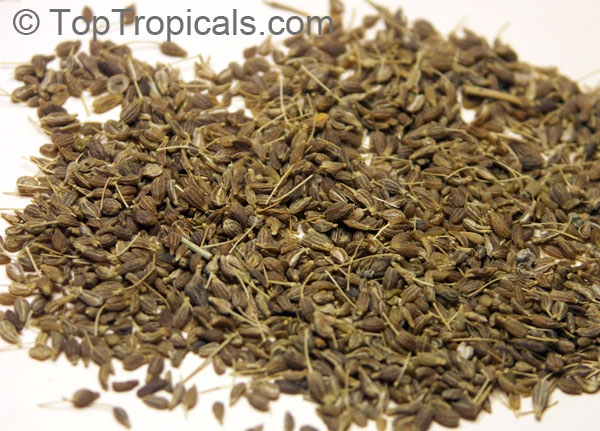Pictogram Guide · Mouse over pictogram for definition
Pimpinella anisum
Anise, AniFamily: Apiaceae / Umbelliferae
Origin: Egypt, Greece, Crete and Asia Minor










Anise is known for its flavor, which resembles liquorice, fennel and tarragon. Western cuisines have long used anise as a moderately popular herb to flavor some dishes, drinks, and candies, and so the word has come to connote both the species of herb and the licorice-like flavor. The most powerful flavor component of the essential oil of anise is anethole. Anise has a reputation as a medicine in coughs and pectoral affections. In hard, dry coughs where expectoration is difficult, it is of much value.
Anise is a herbaceous annual plant growing to 3 ft. Anise plants grow best in light, fertile, well drained soil. The seeds should be planted as soon as the ground warms up in spring. Because the plants have a taproot, they do not transplant well after being established, so they should be started either in their final location or transplanted while the seedlings are still small.

